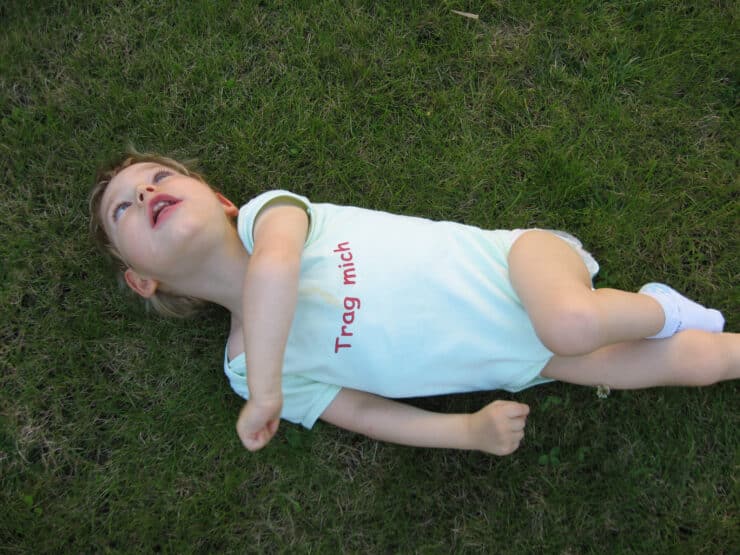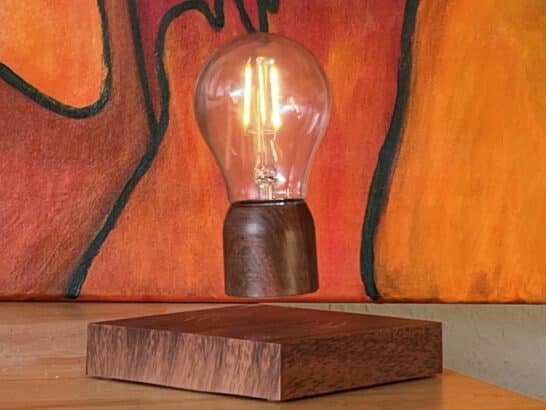Parents of affected children have reported that their children assume a C-shaped posture over a longer period of time, sometimes for several hours. The children seem to feel highly uncomfortable; they cry a lot and sometimes also vomit.
These episodes are referred to as dystonic attacks (also known as dystonic crises or episodic dystonia). Dystonic attacks were different from epileptic seizures in the affected children and, if investigated, were not associated with specific changes in the EEG.
Dystonic attacks often occur without a recognizable cause. In some cases, however, dystonic attacks occur more frequently after certain triggers such as left-sided lying, prone lying or physiotherapy.
The attacks usually begin to occur in infancy and in many cases seem to subside or disappear completely as the child grows older.
Therapy
There is no known treatment for dystonic attacks. There are frequent reports that natural, non-drug-induced sleep leads to the cessation of dystonic attacks.
Tips to Try Out
- Pay attention to potential triggers and minimize them if possible.
- Stay calm during dystonic attacks. Create a calm environment, provide reassurance, try to help the child fall asleep naturally. Position the child in such a way that vomiting does not cause any harm.
Scientific Background
Data From The Literature
- Grosso et al. (2002) described a child with dystonic crises. The attacks were described as phases of combined motor disorder (dystonia/ choreoathetosis), sometimes lasting several hours, with no recognizable trigger. The EEG showed no changes in interictal activity during these phases. In this case, the dystonic crises could be prevented with levodopa and carbidopa medication.
Natural History Study from 2014
Dystonic attacks occurred in 11 of 33 children. In all 11 children, the onset of the dystonic attacks was within the first six years of life. Children who had not experienced dystonic attacks up to that point did not develop them later on in life. In almost half of the cases (5/11), the dystonic attacks subsided by age 8. In one child, levodopa was administered for treatment, but did not have the desired effect. In 2 cases, the parents stated that the administration of a proton pump inhibitor reduced the frequency of dystonic attacks.
Natural History Study from 2023
25 out of 65 children were affected by dystonic attacks. The onset age was within the first 6 years of life and in about half of the children (10/22) the dystonic attacks ceased (on average at the age of 5.5 years). The causes of the dystonic attacks were mostly pain, reflux, constipation and emotion. In a few children, different body positions (prone position, lateral position, changing positions) also seemed to trigger dystonic attacks. In three cases, natural sleep had a therapeutic effect. However, medication was hardly able to treat the dystonic attacks.
This entry was written to the best of our knowledge based on the reported experiences of parents of affected children. In addition, currently available data from the 2014 and 2023 Natural History Studies of PCH2 and from general medical literature has been included. It is not a substitute for consulting a medical professional. PCH2cure assumes no liability in this respect.
- Grosso S, Mostadini R. Cioni M, Galluzzi P, Morgese G, Balestri P (2002) Pontocerebellar hypoplasia type 2. Further clinical characterization and evidence of positive response of dyskinesia to levodopa. J Neurol 249: 596-600
- Natural History Study from 2014: Frölich S. Natürlicher Verlauf der Pontocerebellären Hypoplasie Typ 2 [Dissertation to Acquire the Academic Degree Doctor of Medicine] Tübingen: Eberhard-Karls-Universität; 2014
- Natural History Study from 2023: Kuhn A L. Gastrointestinale Symptome, Ernährung und Gedeihen bei Pontocerebellärer Hypoplasie Typ 2 A [Dissertation to Acquire the Academic Degree Doctor of Medicine] Freiburg im Breisgau: Albert-Ludwigs-Universität; 2023

